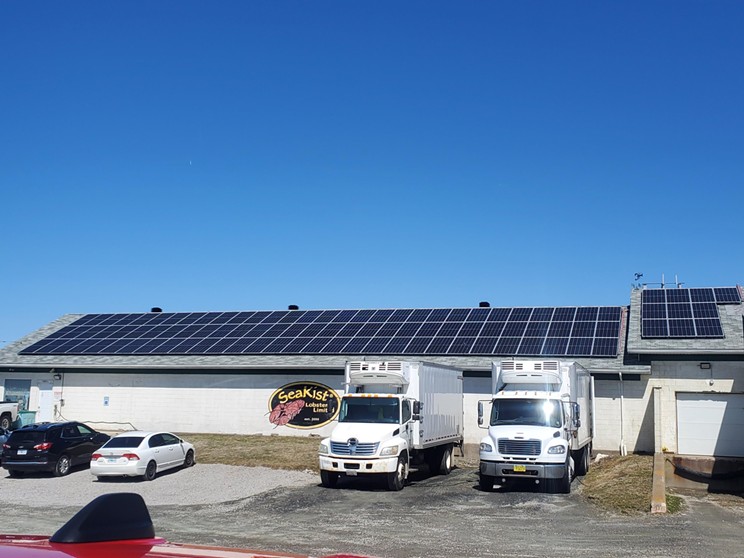For years, members of Glooscap First Nation identified clean energy as one of the community’s top priorities; this summer, the community is taking a major step toward renewable, self-sufficient energy, with a solar-powered microgrid project.
Glooscap First Nation is a Mi’kmaw community of about 400 people located in Kings and Hants counties.
In 2015, Glooscap Ventures, the economic development arm of Glooscap First Nation, surveyed community members about their priorities for investment; clean energy was among the top three, alongside commercial fisheries and Glooscap Landing, the community’s business centre.
Following that feedback, Glooscap Ventures built a 25-kilowatt (kW) solar project at Glooscap Landing, the second-largest consumer of energy in the community. Dipping their toe into solar allowed them to show community members what was possible.
“That probably did help a lot with the community members, in trying to prove that we can do this, and maybe on a bigger scale,” says Michael Peters, CEO of Glooscap Ventures.
In 2022, the community secured provincial funding to conduct a microgrid study. Bolstered by the positive results of that study, Glooscap Ventures was able to secure further provincial and federal funding for the grid itself.
Phase one of the work will include a 290-kW ground-mount solar array, along with two electric vehicle charging stations, which will get Glooscap Landing to 80 per cent solar power, something, says Peters, he’s extremely excited about.
Meanwhile, this past year, Glooscap Ventures conducted another poll of the community’s investment priorities; this time, renewable energy was ranked as number one.
“That was what really gave us the feedback…to drive us into that sector,” says Peters.
Across Canada, a growing number of Indigenous communities are pursuing clean energy. Roughly 200 medium-to-large renewable energy projects, which are mostly partnerships between communities and utilities or developers, are completed or underway. In Atlantic Canada, this includes initiatives like the energy storage project announced in February — a partnership between Nova Scotia Power and Wskijnu'k Mtmo'taqnuow Agency, a corporation co-owned by 13 Mi’kmaw communities, including Glooscap First Nation. The project is meant to help with greater renewable integration into the grid.
There are also more than 2,000 micro or small projects in place with Indigenous leadership or partnership.
That number includes Glooscap Landing’s microgrid project, which Peters says will move to a second phase, likely in 2025, “…to help us move even further toward our goal of having Glooscap Landing run 100 per cent off solar energy and battery storage.”

Meanwhile, Peters says Glooscap Ventures is also developing renewable energy capacity in other areas, including a 409-kW solar array at the community’s Yarmouth seafood processing facility. Elsewhere, the community is partnering with Annapolis Valley First Nation and the Municipality of the County of King’s to construct a solar garden, on a former landfill site, with enough capacity to power about 1,000 homes. Glooscap Ventures is also investing in wind projects in other parts of the province, with the intention of generating revenue from the sale of power to the grid.
Additionally, Peters says, Glooscap Ventures is also developing a community energy plan.
“We’re talking to community members on what they want to see on energy production and usage,” he says. “So we're putting a lot of investment into solar, but we’re looking at further technologies with [battery] systems, EV chargers, wind, and other ways we can use our community to get closer to net zero.”
This not only has benefits for the community — moving it further toward energy self-sufficiency while reducing issues with frequent power outages — it’s also in line with Mi’kmaq values.
Glooscap Ventures has a mandate to do no harm, including no harm to the earth, says Peters— and pursuing renewable energy is part of that.
“We can only do so much, but what we can do, we’re going to try to do our best with.”
The Climate Story Network is an initiative of Climate Focus, a non-profit organization dedicated to covering stories about community-driven climate solutions.









